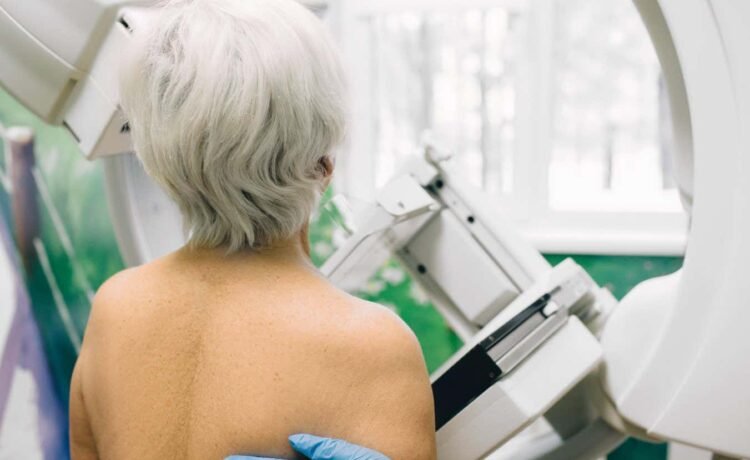X-ray boosting fabric could make mammograms less painful


Mammograms can be painful, but they may not need to be
Daria Artemenko/Alamy
Getting an X-ray can be uncomfortable – you may have to lay still while you’re in pain or have part of your body compressed. But a flexible fabric that makes X-rays easier to detect could eliminate that.
“Imagine scanning a child’s injury without immobilising them, or enabling pain-free breast exams,” says Li Xu at the Hong Kong Polytechnic University. She and her colleagues created a textile called X-Wear that scintillates – meaning it releases light when exposed to X-rays – which could make this a reality.
Because X-rays are more difficult to detect than visible light, medical and industrial X-rays, as well as CT scans, use scintillating components. These can pick up X-rays after, for example, passing through a limb, converting the rays that emerge into visible light that can then be used to create an image of the body part to show internal detail like broken bones. But the most commonly used scintillators are rigid, which makes the devices they are embedded in bulky and uncomfortable to interact with.
To avoid this, the researchers re-shaped scintillating materials, for instance gadolinium oxide studded with bits of europium, into narrow fibres, which they then wove into fabric.
Xu says that it was a technical challenge to make these fibres flexible while also ensuring they emit enough light to create high-resolution images once they are hit with X-rays. Her team demonstrated that the fabric can be useful for taking dental X-rays – in tests, it made X-Wear conform to the shape of a mouth model made from clay and teeth. It also used it for mammography, where it created an X-Wear bra that eliminated the need for a person’s breast to be compressed during imaging, which is standard current practice.
Imalka Jayawardena at the University of Surrey in the UK says that X-Wear’s ability to conform to the body is a big advantage compared with other flexible scintillator designs that are typically film-like and bendy, but can’t wrap around objects. However, he says that detectors for light that X-Wear must be paired with are still flat, which currently limits possible uses of the fabric.
The researchers can produce samples of X-Wear up to around a quarter of a square metre, so before it can be widely used, they will have to scale its production to larger sizes and adapt it to industrial-grade equipment, says Xu.
The team is also working on industrial applications for X-Wear, such as small, flexible devices for inspecting electronics or pipelines for flaws. Xu says that first responders in a disaster zone could also use X-Wear alongside a smartphone and a compact X-ray source to do on-site scans.
Topics:
You Might Also Like
Physicists are uncovering when nature’s strongest force falters
The STAR detector at the Relativistic Heavy Ion ColliderBROOKHAVEN NATIONAL LABORATORY We are getting closer to understanding when the strong...
There are five types of sleep – here’s what that means for your health
Sleep can be experienced very differently from one person to the nextPeopleImages/Shutterstock Different people may experience one of five types...
Your happiness in life may not be U-shaped – here’s how it could vary
Our happiness levels are not constant throughout our livesIppei & Janine Photography/Getty Images The commonly held belief that happiness follows...
Jane Goodall, dogged advocate for the natural world, has died aged 91
Jane Goodall studying the behaviour of a chimpanzee during her research in TanzaniaPenelope Breese/Liaison Renowned conservationist Jane Goodall has died...









